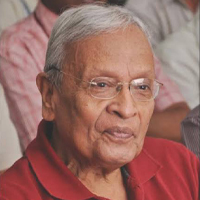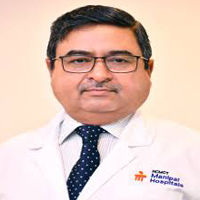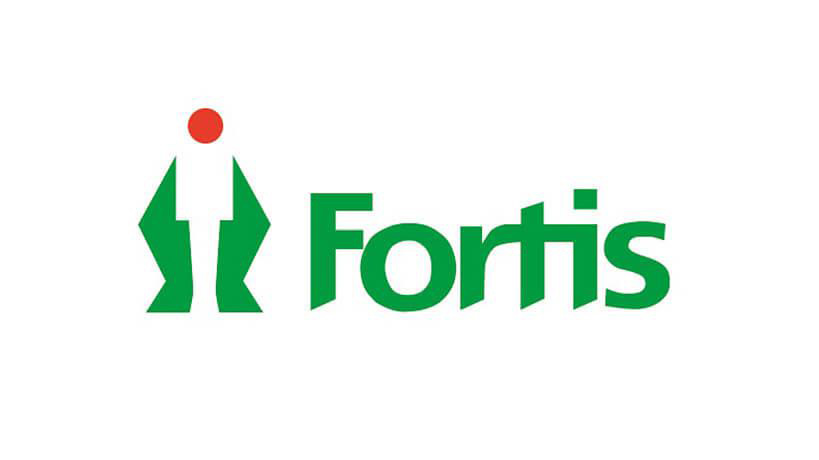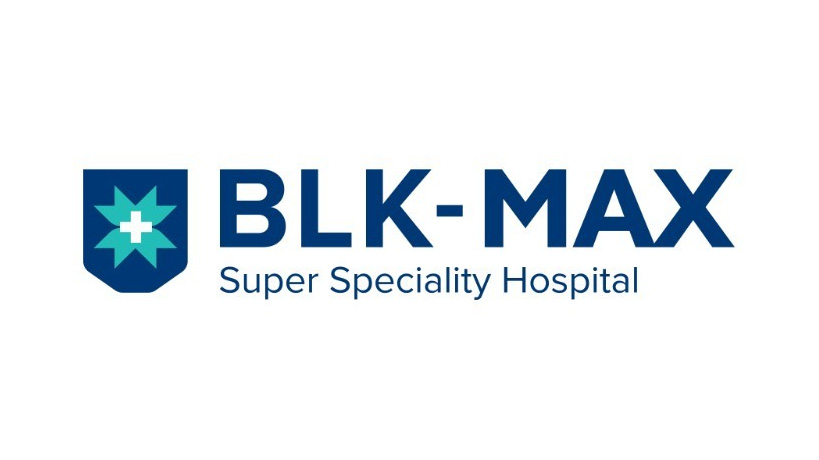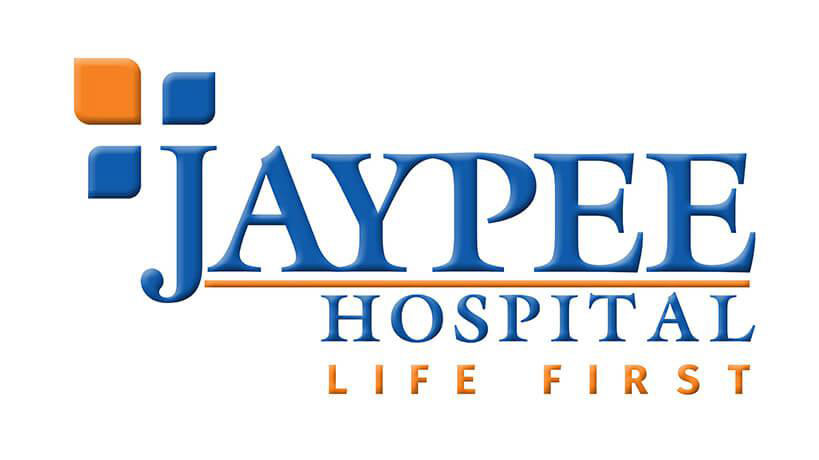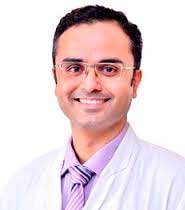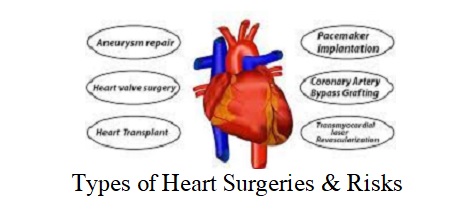
Get Free Treatment Plan From Top Hospital
Attach Medical Report
Spine and Back Surgery- Cost, Types, Risks, Recovery, and Benefits
The intricate and delicate structure of the human spine forms the foundation of our body’s mobility and stability. It consists of vertebrae, discs, nerves, and supporting muscles, working together in harmony. Throughout the years, spine surgery has undergone a remarkable transformation, revolutionising how spinal conditions and disorders are treated. This advance has greatly impacted the landscape of medical care for a multitude of individuals with spinal issues.
The field of spine surgery in India has undergone remarkable advancements, transitioning from traditional open surgeries to minimally invasive procedures and cutting-edge robotic technologies. This evolution not only enhances patient outcomes but also facilitates reduced postoperative discomfort and faster recovery time. Join us on a comprehensive exploration into spine surgery in this narrative journey.
Spine Surgery: Overview
Spine surgery, a specialised medical procedure, aims to alleviate pain, discomfort, and impaired functionality caused by various spinal conditions. The spine holds significant importance in the human skeletal system as it provides structural support, safeguards the spinal cord, and enables smooth body movement.
When conservative treatments such as medication, physical therapy, and lifestyle adjustments fail to alleviate spinal issues like herniated discs, spinal stenosis, or degenerative disc disease, the option of spine surgery becomes viable. Various types of spine surgeries exist for specific conditions and patient needs.
In some cases, a discectomy may be performed to address issues caused by a damaged spinal disc pressing on nerves. On the other hand, surgeons may opt for spinal fusion to stabilise a specific segment of the spine by joining two or more vertebrae together using bone grafts or implants.
In recent years, the use of minimally invasive techniques has become prominent. These methods involve smaller incisions and specialised instruments to achieve surgical goals. They results in reduced tissue damage, faster recovery, and fewer complications. Before undergoing spine surgery, a thorough evaluation is conducted. It includes physical examinations, imaging tests, and consultations with the best spine surgeon in India medical specialists to determine the most suitable approach for the patient’s condition.
After undergoing surgery, individuals often engage in a comprehensive rehabilitation program. It includes physical therapy and targeted exercises designed to restore strength, flexibility, and overall function. However, it is important to note that like any surgical procedure, spine surgery carries inherent risks such as infection, blood clots, or adverse reactions to anaesthesia.
Hence, individuals contemplating spine surgery should actively participate in open and comprehensive discussions with their healthcare providers to fully grasp the potential advantages, drawbacks, and anticipated results.
Spine Surgery Types
Here are the following types of Spine Surgery:
Vertebroplasty and Kyphoplasty
Vertebroplasty and Kyphoplasty are minimally invasive treatments used to address pain caused by osteoporotic compression fractures of the spine. Both procedures involve injecting bone cement directly into broken spinal bones. At the same time, during Kyphoplasty, an inflatable balloon may first be inserted and expanded within it to create more space for the injection of cement into broken vertebral bodies and decrease kyphosis (bending of the spine), thus relieving pain caused by compression fractures of vertebrae bodies that further compress fractured bones further compression fractured vertebrae compression fractured bones further compression of fractured bones.
Before the procedure begins, a thorough medical exam, including imaging tests (MRI, CT or bone scan), may be conducted to confirm your vertebral compression fracture diagnosis and to explore treatment options with you. Your surgeon will discuss all available therapies.
Surgery typically lasts about an hour for each spinal bone being treated, with general anaesthesia or sedation used for your comfort. Your physician will inject numbing medicine through a small tube into your back to prepare it for the procedure, then use X-ray guidance to insert needles into the bone using needle and balloon techniques known as Kyphoplasty (Kyphoplasty).
Spinal Laminectomy/Spinal Decompression
Spine surgeons utilise this procedure during a lumbar laminectomy or cervical laminectomy to address issues in the lower back and neck respectively. They remove a small portion of bone known as the lamina during the surgery to decompose spinal nerves. It alleviates symptoms such as pain, weakness, or numbness in the arms or legs by relieving pressure from these nerves. It may be performed when herniated discs, bone spurs, or other conditions narrow your spinal canal and pinch one or more spinal nerves.
Herniated discs occur when the gelatinous centre of a spinal disc protrudes out of its normal space and presses on surrounding nerves, placing pressure on them. Bone spurs are bony growths on the edges of vertebrae that cause additional nerve compression; other conditions that can lead to pain and numbness include spinal stenosis, which compresses your spinal cord or nerves and is known to cause discomfort, such as spinal stenosis (compression of spinal cord/nerve compression).
Discectomy
Discectomy is a surgical procedure used to extract herniated or bulging spinal disks. Discs are cushioning materials that cushion vertebrae(spinal bones), protecting the spinal cord and nerves, with tough outer walls surrounding a jelly-like nucleus. A herniated disc occurs when this fluid leaks out through weak spots in its outer walls, irritating nerves or pressuring them and leading to symptoms such as pain, numbness or tingling in one or both areas.
Under local anaesthesia with mild sedation, surgery to extract a disc can be done with minimally invasive techniques. Your surgeon will make a small incision near the affected spine and use a tubular retractor to create an operative corridor to reach the affected spine area. A portion of lamina bone (found behind a spinal column and nerves) and any affected disc portion are extracted together during this procedure.
Foraminotomy
Spine surgeons use neuroforamen surgery to open the space where spinal nerves emerge from the spine cord, known as neuroforamen. This procedure may treat spinal stenosis (narrowing of the spinal canal or foramen). Over time, narrowing may be caused by bone spurs or facet joint arthritis; but is more commonly caused by herniated disks pressing against nerves causing narrowing to occur more quickly and causing leg-numbing, tingling sensations, and buttock pain.
At this minimally invasive procedure, you’re under anaesthesia or sedation while the surgeon makes small incisions near your area of concern. With a tubular retractor and fluoroscopes displaying real-time images of the problem area, the surgeon moves your neck muscles away. The surgeon exposes vertebral bones on one side before using laser technology to remove materials that press against spinal nerves.
If you require cervical foraminotomy surgery, your physician may use a bone graft to enlarge the passageway where spinal nerves exit vertebrae. Rarely (1 to 2 per cent) can a bone graft move out of position between your vertebrae, requiring another surgery. After surgery, recovery includes wearing a neck collar to limit head and neck movement until physical therapy begins gradually to help increase the strength and mobility of neck muscles.
Nucleoplasty
The spine consists of bones called vertebrae connected by cushion-like discs known as vertebral discs that absorb shocks caused by everyday activity like running or jumping. Over time, however, these discs can weaken and rupture or herniate, leading to back pain and nerve damage.
Your surgeon uses a needle and radiofrequency device to make small cuts in the inner portion of your herniated disc. They insert a probe through a cannula into the disc; once there, this probe sends radio waves that break apart portions of your herniated disk to reduce pressure inside your spine and enable any herniated portions to reabsorb themselves back into normal. Once rested, you can begin the healing process.
Spinal Fusion
Spinal fusion requires a neurosurgeon to insert bone or bone-like material between the vertebrae in your spine to form a new bone graft that gradually integrates as part of your bones over time. Metal plates, screws and rods may be kept together until this process has been completed.
While spinal fusion may reduce pain by eliminating movement between vertebrae, it places additional stress and load on discs and bones above and below the fusion segment, potentially causing problems over time. Therefore, conservative measures like physical therapy or medication should be considered before surgery.
As with any surgery, spinal fusion carries inherent risks, such as bleeding and infection. Furthermore, patients undergoing the procedure may experience persistent discomfort at the graft site and recurrence of original symptoms.
Artificial Disk Replacement
If a patient experiences problems with multiple spinal discs, we offer artificial disk replacement surgery options. These devices, made of metal and plastic similar to knee and hip joints, mimic the function of normal intervertebral disks by replacing only their annulus (outer ring), nucleus, vertebral endplate bone or both at once – unlike spinal fusion, which could risk adjacent segment disease if used incorrectly.
For this procedure, you will be placed on a table while a spinal surgeon administers anaesthesia to sedate you and ensure you remain asleep throughout the operation. An IV line will be inserted into either arm or hand so anaesthesia medications may be delivered to keep any discomfort at bay during surgery.
An abdominal incision measuring 3-8 centimetres will be made transversely or obliquely to enable your surgeon to access the spine, with muscles and organs carefully moved away from its vicinity. A special retractor will then be placed in front of the spine; x-rays are taken after placement of this retractor to determine which spinal level it treats; once complete, an implant known as a cage may then be inserted to fill any spaces left by damaged spinal discs – this cage comes in various shapes sizes and materials for installation into this space left by damaged discs – with each surgeon creating enough space within for them both implants to fit within its surroundings – the cages come in various shapes sizes and materials to ensure its effective installation into its space left by damaged spinal discs – one size never fits all cases!
Spine Surgery Symptoms
Here are the following symptoms of Spine Surgery:
Nerve Compression Symptoms
Nerve compression symptoms typically include discomfort, numbness or tingling in the area where a nerve has been compressed, which may interfere with gripping objects, lifting items or moving limbs affected by pinched nerves.
Physical therapy may help promote movement and nerve blood flow, thus relieving pressure. Your doctor may also prescribe medication to alleviate pain or muscle weakness.
Motor Function and Mobility Issues
After spinal surgery, symptoms such as numbness, weakness or pain may persist post-surgery. Most often, these will gradually improve as nerves heal themselves over time.
Some surgeries, like spinal fusions, may not heal as planned, and spine movement can strain metal hardware or cause new issues such as vertebral fractures. When this happens, the fusion isn’t as strong and may lead to stress on metal hardware and even fractures of vertebrae.
Certain surgical procedures, like Kyphoplasty or spinal cord stimulation, utilise minimally invasive approaches (MIS). These approaches use fluoroscopes or endoscopes to guide tubular dilators into your spinal canal area of interest and allow surgeons to insert rods and screws without cutting into or dissecting surrounding muscles.
Loss of Bladder Or Bowel Control
Compressed spinal nerves impede normal bladder and bowel functions, potentially resulting in urinary retention, incontinence, and constipation/diarrhoea.
Urologists specialise in reconstructive surgery to improve bladder and bowel functionality while providing medications that reduce bladder contractions, lower urinary frequency, increase the loss of control over your bladder and increase the storage capacity of your bladder.
Progressive Pain and Limited Relief
Most patients can find relief from their pain through non-surgical treatments such as exercise, anti-inflammatory medication, physical therapy, and steroid injections. Should these approaches fail to provide effective relief, a spine specialist may suggest surgery as the sole alternative.
Spine surgery typically entails extracting bone and tissue that are compressing spinal nerves. Furthermore, spine surgeons offer decompression procedures such as laminectomy, discectomy and foraminotomy to relieve pressure on these nerves.
To treat lumbar spine stenosis, surgeons can use minimally invasive surgery techniques such as tubular dilators to relieve pressure on spinal nerves and relieve any pressure on them by employing techniques such as tubular dilators.
Structural Abnormalities and Instability
A normal spine is designed to support body weight with flexibility and support, while deformed ones may disturb this equilibrium, leading to instability that causes various symptoms.
Herniated discs can impede spinal nerves as they exit the spine, leading to symptoms like pain, numbness and weakness that interfere with function. Surgery options could include removing offending disk(s) or fusing two or more vertebrae.
Fusion surgery usually involves placing a bone graft between spinal vertebrae. This graft may come from your hip (autograft) or a bone bank. Newer technologies like fluoroscopy and endoscopy allow for smaller incisions through minimally invasive surgery (MIS) techniques to place this graft, further stabilising the spine by restricting movement at the surgical site.
Spine Surgery: Treatment Options
Spine surgery addresses various spine-related conditions through medical procedures. Depending on the specific condition and its severity, different types of surgeries are available. Let’s explore some common treatment options in detail.
Conservative Approaches
Before opting for surgery, doctors often recommend conservative approaches to manage spine-related conditions. These approaches may encompass physical therapy, pain management techniques, medication, and lifestyle modifications. The primary goal of employing these conservative treatments is to diminish pain and enhance functionality without surgery. However, if these methods fail to yield sufficient relief, the consideration of surgery becomes a viable option.
Minimally Invasive Spine Surgery
Minimally invasive spine surgery represents a modern approach that utilises advanced techniques and tools to perform surgical procedures. These procedures involve smaller incisions, offering numerous advantages compared to traditional open surgery. Benefits include reduced blood loss, shorter recovery time, and decreased postoperative pain. Minimally invasive techniques can effectively address various spine conditions such as herniated discs, spinal stenosis, and spinal deformities.
Spinal Fusion
Spinal fusion is a commonly performed surgical procedure that aims to treat spine conditions are characterised by instability. The process involves connecting two or more vertebrae using bone grafts or implants. By joining the vertebrae, spinal fusion effectively reduces pain and provides stability to the spine. It is frequently employed to address degenerative disc disease, spinal fractures, and spinal deformities.
Discectomy and Microdiscectomy
A discectomy is a surgical procedure used to alleviate pain, numbness, and weakness caused by a portion of a herniated or bulging disc pressing on a nerve root or the spinal cord. It involves removing the problematic disc through surgery. One minimally invasive version of this procedure is called microdiscectomy, which utilises specialised instruments and requires a smaller incision. Both discectomy and microdiscectomy aim to relieve symptoms and enhance the patient’s quality of life.
Artificial Disc Replacement
An artificial disc implant replaces a damaged or degenerating spinal disc during an artificial disc replacement treatment. This surgery is an alternative to spinal fusion and tries to keep the spine’s range of motion while relieving discomfort. Degenerative disc disease and disc herniation are two disorders that are frequently treated with artificial disc replacement.
Spine Surgery: Risk & Complications
Spine surgery, like any surgical procedure, carries risks and potential complications, even when performed by the best spine doctor in India. It is crucial to have an understanding of these risks and have a discussion with your healthcare provider before making a decision. Let’s explore some possible complications that can arise from spine surgery:
Infection
In the world of surgery, infections can be a potential complication. Even spine surgery is not exempt. However, surgeons take proactive measures to minimise the risk of infection. They administer antibiotics both before and after the procedure while maintaining strict sterile conditions in the operating room. It’s important to be aware of the signs that may indicate an infection: fever, increased pain, redness, swelling, or drainage from the surgical site. Should you suspect an infection, seeking immediate medical attention is crucial.
Bleeding
Bleeding is another possible complication of spine surgery. Surgeons are careful to minimise bleeding during procedures. However, in rare cases, excessive bleeding may occur, which could necessitate additional intervention like blood transfusions or further exploration through surgery. To ensure timely intervention if needed, patients receive close monitoring for signs of bleeding during and after the surgical procedure.
Nerve Damage
The delicate nature of the spinal cord and nerves poses a risk of nerve damage during spine surgery. Such damage can result in complications including pain, numbness, weakness, or loss of sensation. Surgeons take utmost care to protect the nerves during surgery, but it is important to note that the risk cannot be completely eliminated. The level of nerve damage and subsequent complications may vary depending on the specific procedure and individual factors.
Blood Clots
After spine surgery, blood clots may develop and pose a risk of serious complications. These clots have the potential to travel to different parts of the body, causing blockages in blood vessels. To prevent such occurrences, several measures are implemented, including early mobilisation, the use of compression stockings, and medication to thin the blood. Patients are also advised to strictly follow postoperative instructions to minimise the chances of developing blood clots.
Anaesthesia Complications
Spine surgery necessitates the administration of anaesthesia, which carries inherent risks and potential complications. These may manifest as allergic reactions, breathing difficulties, or adverse responses to medications. To maintain patient safety and effectively handle any arising issues, anesthesiologists closely monitor individuals throughout the surgical procedure.
Spine Surgery: Recovery Time
Spine surgery may help alleviate back pain caused by herniated discs, bone spurs, spinal instability or spine deformities. It may also relieve pressure off pinched nerves and allow the spinal cord to heal faster. Surgery is generally used only as an extreme last resort after more conservative methods, such as lifestyle changes, exercise programs, anti-inflammatory medication, or physical therapy, have failed.
The spine consists of numerous individual bones known as vertebrae that are separated by intervertebral discs, providing movement while cushioning against any potential contact between vertebrae. Over time, however, discs may become damaged or swollen, causing pressure on spinal nerves and irritating or compressing them further. Surgery may be needed to correct an overgrown bone fragment or herniated disc herniation, realign structural deformities or increase stability for greater spine stability.
Minimally invasive spine surgery offers numerous advantages, with shorter recovery times and less scarring. It typically involves making a small incision and inserting tubular dilators into it to widen space allowing surgeons to access areas without cutting muscle tissue.
Traditional spine surgery usually involves large incisions requiring longer recovery due to muscle cutting, which can damage surrounding tissues. Depending on the type of surgery, patients might require up to three days in hospital post-surgery for recovery. In contrast, certain procedures require them to wear a cervical collar for several weeks following procedures. Before opting for spine surgery, exploring noninvasive means of pain relief is advisable.
Spine surgery recovery times vary significantly among people, depending on the procedure and how well each individual follows post-op care instructions. After spinal surgery, it’s important to avoid bending at the waist or lifting anything weighing over five pounds for at least a month afterwards. Only light exercises are recommended. Twisting movements should be avoided to protect their spine. Patients should consult a physical therapist for support afterwards for optimal rehabilitation after spine surgery.
Spine surgery: Best Doctors and spine surgeons in India
India is one of the leading destinations for medical and surgical treatment. One such treatment which has been immensely gaining attention is spine surgery. India offers many doctors and spine surgeons who are efficient in their work for treating the ill. Moreover, Al AfiyaMedi Tour one of the best medical tourism companies in India offers feasibility and accessibility to domestic and foreign patients by helping them offer the best services to guide them in their languages. Al AfiyaMedi Tour is very well-connected and makes sure to have the best experience with doctors, surgeons, and their teams. Below is the list of the top 10 doctors and spinal surgeons
Dr. BipinWalia, Max Saket Hospital, Delhi, India
Dr. Sunil Kumar Baranwal, Fortis Hospital, Delhi, India
Dr. VineeshMathur, Medanta Hospital, Delhi, India
Dr. V K Jain, Max Saket Hospital, Delhi, India
Dr. SaurabhVerma, Manipal Hospital, Delhi, India
Dr. Arun Saroha, Max Saket Hospital, Delhi, India
Dr. Amit Kumar Shridhar, Fortis Hospital, Delhi, India
Dr. Rajagopalan Krishnan, Apollo Hospital, Delhi, India
Dr. Rakesh Kumar Dua, Fortis Hospital, Delhi, India
Dr. SaurabhRawall, Apollo Hospital, Delhi, India
Spine Surgery: Best Hospitals in India
India is a host to one of the best healthcare systems for various treatments. It has various spine surgery offering hospitals. Al Afiya Medi Tour helps you with finding the best hospital for your treatment. Below is the list of top best hospitals in India that are offering spinal surgeries:
Medanta hospital, Gurguram, Delhi, India
Max Hospital, Delhi, India
Fortis Hospital, Gurguram, Delhi, India
Artemis Hospital, Gurguram, Delhi, India
Sanar International hospital, Gurguram, Delhi, India
BLK Max super-speciality Hospital, Delhi, India
Manipal Hospital, Dwarka, Delhi
Metro Hospital, Faridabad, India
Morengo hospital, Gurguram, Delhi, India
Apollo Hospitals, Delhi, India
Kims Hospital, Hyderabad, India
Apollo Hospitals, Hyderabad, India
Spine Surgery: Treatment Cost in India
In recent times, India has emerged as a leading global healthcare destination. It offers high-quality medical treatments at significantly lower costs compared to Western countries. One such treatment that has gained considerable attention is spine surgery, known for its effectiveness in addressing various spinal conditions. Now, let us explore the affordability and accessibility of this essential medical procedure by examining the spine surgery cost in India.
Cost Factors
Several factors influence the cost of spine surgery in India:
Type of Procedure: Spine surgery encompasses a wide range of procedures, from minimally invasive techniques to complex spinal fusions. The type of surgery required significantly impacts overall endoscopic spine surgery costs in India. Minimally invasive procedures are less expensive due to shorter hospital stays and faster recovery times.
Hospital Infrastructure and Reputation: Renowned hospitals with state-of-the-art facilities and experienced medical staff often command higher prices. Patients seeking top-tier medical services might be willing to invest more in a reputable institution.
Surgeon’s Expertise: The surgeon’s experience and reputation influence spine surgery costs. Highly skilled and renowned top spine surgeons in India might charge higher fees for their services.
Location: The cost of living and medical services can vary widely across different regions in India. Metropolitan areas with advanced healthcare facilities generally have higher treatment costs than smaller towns or rural areas.
Inclusions: The quoted cost should also be examined for inclusions. It’s important to understand whether the quoted price covers pre-surgical consultations, diagnostic tests, post-operative care, and potential complications.
Personal Support: If possible, consider going on your medical trip with a friend or family member who can support you emotionally. Having someone by your side might make the experience of navigating a foreign country and having surgery less stressful.
Health Insurance: Check your health insurance policy to see if it covers medical procedures overseas. If not, look into options for medical tourism insurance or add more travel insurance to protect your interests.
Average and Maximum Costs
On average, spine surgery costs in India range from INR Rs. 2,30,000 to INR Rs. 5,50,000. This wide range accommodates various surgeries, from minimally invasive procedures to more complex spinal reconstructions. Patients can opt for hospitals that suit their budget and medical requirements, making the process more flexible and tailored to individual needs.
Affordability and Accessibility
The affordability of scoliosis surgery cost in India has made it a viable choice for patients from diverse backgrounds. With world-class medical facilities and highly skilled surgeons, patients can access top-tier treatment without the burden of exorbitant expenses. As a result, this development has fostered medical tourism, enticing international patients to choose India as their destination for high-quality treatment that might otherwise be financially out of reach in their home countries.
Seeking spine surgery in India can offer a cost-effective, high-quality solution for individuals with spinal conditions. Medical tourism is flourishing, and India stands out as an alluring destination due to its combination of skilled medical professionals, advanced facilities, and cost-effective treatment options. However, individuals should approach this endeavour with meticulous planning, extensive research, and a comprehensive grasp of the procedure’s intricacies and associated expenses. By conducting thorough preparations, patients can embark on their medical journey confidently, knowing they have made well-informed decisions regarding their health and overall well-being.
Spine Surgery: Success Rate in India
Spine surgery aims to address structural abnormalities of the spine, alleviate pain, and improve overall functionality. This surgical intervention is effective in managing a range of conditions, including herniated disks, spinal stenosis, and scoliosis, as well as reducing numbness or tingling sensations in the arms or legs. Most doctors recommend spine surgery after other methods have failed to relieve symptoms.
Your doctor will perform surgery on any areas of the spine causing discomfort, such as bone spurs or tumours causing backache. They may also repair any damages to ligaments, tendons or nerves in your spine that need repair.
Once your spine is healthy, you will experience much greater energy and can do what you love without pain or complications. Expect to see improvement within six weeks of surgery. Following all recommendations from your surgeon is crucial for expediting recovery and minimising potential complications.
India’s success rate in spine surgery procedures is remarkable, primarily attributed to its renowned hospitals and highly skilled medical professionals. This has made India an attractive destination for patients seeking quality healthcare at a reasonable cost, drawing interest from individuals not just within India itself but also from the US, Canada, the UK, and other developed nations.
India stands out as an attractive option for spine surgery due to its competitive prices and safe environment. India’s multi-speciality hospitals are equipped with state-of-the-art technologies and tools for performing successful spinal procedures safely, making the procedure much less complex for international patients to experience. Furthermore, its fast-track process for obtaining medical visas makes visiting India even simpler for receiving care – creating many opportunities for spine surgery in India.


If you are planning for Spine Surgery in India and searching for the best Spine Surgery hospital in India then no worries. Al Alfiya Medi Tour is ready for helping you. We have a team of experienced healthcare consultants. They will help you in finding the best hospital for Spine Surgery in India. You can choose any top Spine Surgery hospital in Delhi, Gurgaon, Faridabad, Noida, Chennai, Mumbai, etc. The list of Spine Surgery hospitals in the main cities- Delhi, Mumbai, Gurgaon, Noida, Faridabad, etc. in India with complete details such as hospital address, phone number, city, and best doctors list, etc. is given below. You can book an online appointment with any hospital now.
Book An Appointment for Spine Surgery

Get Free Treatment Plan From Top Hospital
Attach Medical Report

Many people go to India to take advantage of the country’s high success rate and low costs. The price of an endoscopic spine surgery cost in India ranges from $6,000 to $8400. Scoliosis surgery in India costs over $11,000 (Rs789,090) and attracts a lot of foreign patients. Another option is Pediatric cervical spine surgery, which costs $6,800 (Rs487,801). Therefore, it comes as no surprise that so many foreign patients chose India.

Spine Surgery success rate in India is very excellent. Although success rate depends on various factors such as hospital, doctor, patient, and many more. You can consult online with our healthcare professionals to know the success rate of Spine Surgery in India.
Contact Form
Attach Medical Report
Top Doctors & Surgeons in India
Why Choose Us

Personalized Care
24x7 Supports
Top NABH and JCI accredited Hospitals
Free Cost Estimation & Medical Opinion from Specialist
Get Free Tele/Video Consultation
Visa and Traveling Assistance
Post-surgery with Assistance in Follow-ups


